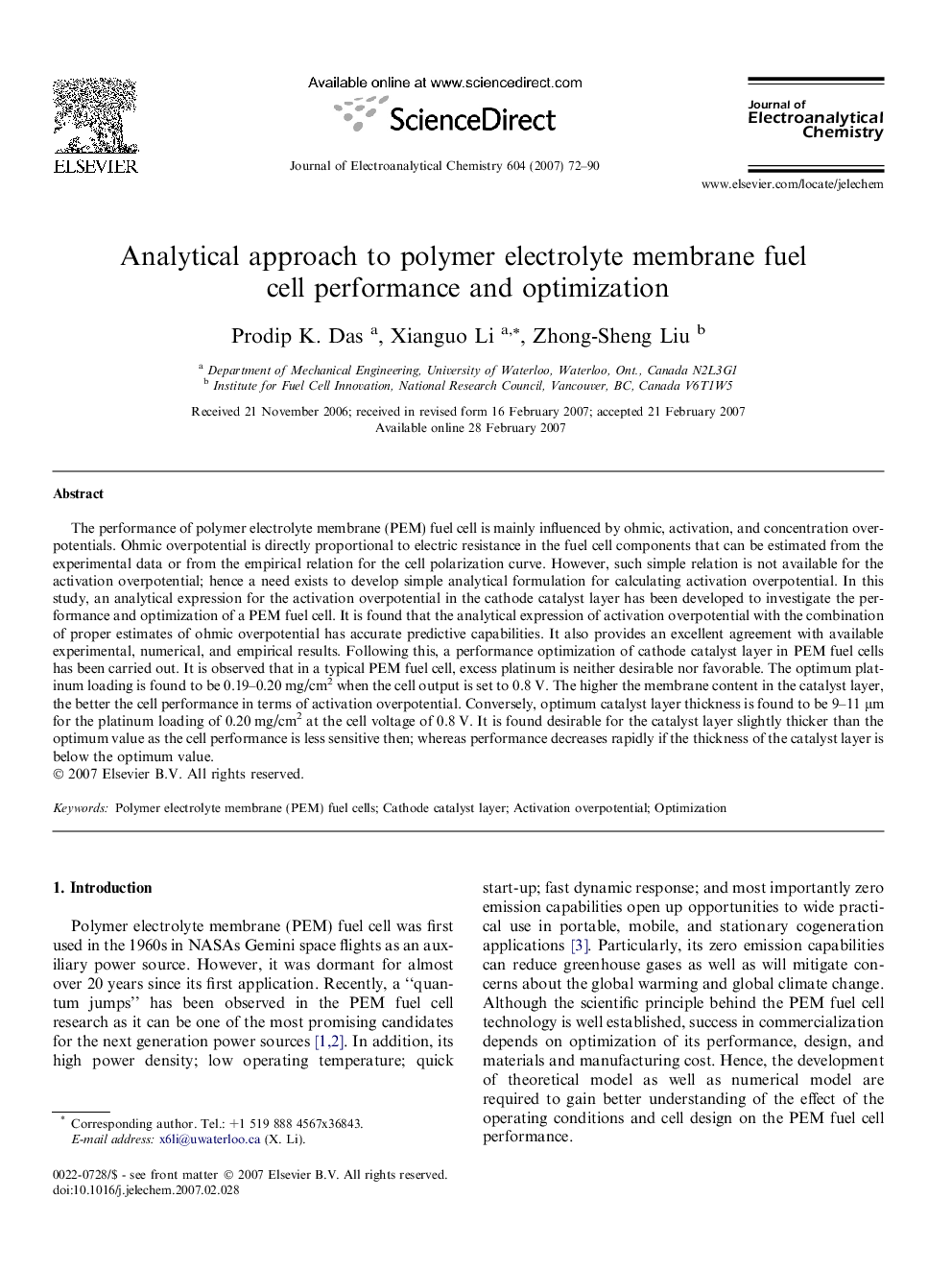| Article ID | Journal | Published Year | Pages | File Type |
|---|---|---|---|---|
| 220837 | Journal of Electroanalytical Chemistry | 2007 | 19 Pages |
The performance of polymer electrolyte membrane (PEM) fuel cell is mainly influenced by ohmic, activation, and concentration overpotentials. Ohmic overpotential is directly proportional to electric resistance in the fuel cell components that can be estimated from the experimental data or from the empirical relation for the cell polarization curve. However, such simple relation is not available for the activation overpotential; hence a need exists to develop simple analytical formulation for calculating activation overpotential. In this study, an analytical expression for the activation overpotential in the cathode catalyst layer has been developed to investigate the performance and optimization of a PEM fuel cell. It is found that the analytical expression of activation overpotential with the combination of proper estimates of ohmic overpotential has accurate predictive capabilities. It also provides an excellent agreement with available experimental, numerical, and empirical results. Following this, a performance optimization of cathode catalyst layer in PEM fuel cells has been carried out. It is observed that in a typical PEM fuel cell, excess platinum is neither desirable nor favorable. The optimum platinum loading is found to be 0.19–0.20 mg/cm2 when the cell output is set to 0.8 V. The higher the membrane content in the catalyst layer, the better the cell performance in terms of activation overpotential. Conversely, optimum catalyst layer thickness is found to be 9–11 μm for the platinum loading of 0.20 mg/cm2 at the cell voltage of 0.8 V. It is found desirable for the catalyst layer slightly thicker than the optimum value as the cell performance is less sensitive then; whereas performance decreases rapidly if the thickness of the catalyst layer is below the optimum value.
